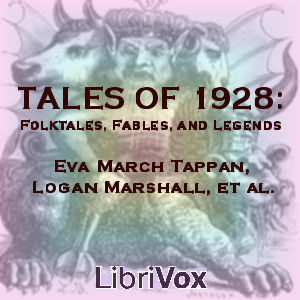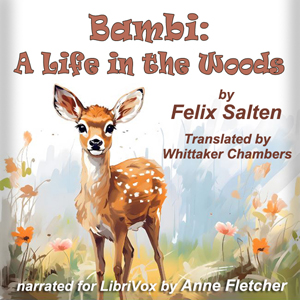
Celebrate the public domain with the Internet Archive in the following ways:
- Register for our Public Domain Day celebrations on January 22 – both virtual and in-person.
- Submit a short film to our Public Domain Film Remix contest.
- Explore the works that have entered the public domain in 2025, below.
On January 1, 2025, we celebrate published works from 1929 and published sound recordings from 1924 entering the public domain! The passage of these works into the public domain celebrates our shared cultural heritage. The ability to breathe new life into long forgotten works, remix the most popular and enduring works of the time, and to better circulate the oddities we find in thrift stores, attics, and on random pockets of the internet are now freely available for us all.
While not at the same blockbuster level as 2024 with Steamboat Willie’s passage into the public domain, works from 1929 still inhabit strong cultural significance today. The works of 1929 continue to capture the Lost Generation’s voice, the rise of sound film, and the emerging modern moment of the 1920s.
Musical Compositions
Show tunes and Jazz dominated the year with many standards that we remember today first being published. While best known for the 1952 film of the same name, Singin’ in the Rain was first published in 1929 and serves as the inspiration for our remix contest this year. George Gershwin also officially published (and copyrighted) his suite An American in Paris following a premiere in late 1928.
Below is sheet music for some popular compositions of the time.
- Singin’ in the Rain
- Wedding of the Painted Doll
- You Were Meant For Me
- Am I Blue?
- Ain’t Misbehavin’
- What Is This Thing Called Love?
- Bolero
Literature
Reflections on World War I continued with A Farewell to Arms by Ernest Hemingway, the first English translation of All Quiet on the Western Front, and Richard Aldington’s Death of a Hero. William Faulkner published his modernist novel The Sound and the Fury. A. A. Milne followed up 1928’s The House at Pooh Corner by adapting The Wind in the Willows into the play Toad of Toad Hall. Detective fiction thrived in 1929, with The Maltese Falcon serialized in Black Mask, Agatha Christie captivating readers with The Seven Dials Mystery, and the first Ellery Queen novel, The Roman Hat Mystery, making its debut. Explore our 1929 periodicals to find more hidden detective gems.
While not a towering work of literature, the first set of comic strips featuring Popeye also are joining the public domain. Popeye first made an appearance in Thimble Theatre on January 17, 1929. Initially just a side character for an adventure arc featuring gambling and sailing, Popeye rose quickly to fame. By February 4, 1931 the Thimble Theatre would feature a subtitle, Starring Popeye, before being renamed just Popeye later on.
Below is a further selection of works from the year:
- Rope by Patrick Hamilton
- A Room of One’s Own by Virginia Woolf
- A High Wind in Jamaica by Richard Hughes
- Is Sex Necessary? Or, Why You Feel the Way You Do by E. B. White and James Thurber
- Look Homeward, Angel by Thomas Wolfe
Dive into Archive’s literary collection to unearth more classics from 1929.
Films
Last year Mickey Mouse made a splash with Steamboat Willie cruising into the public domain. This year TWELVE more Mickey shorts join to flesh out the notable events of Mickey’s young career. He speaks his first words in The Karnival Kid, he wears gloves for the first time in The Opry House, and Ub Iwerks leaves the studio at year’s end with Wild Waves. Disney animation also kickstarted their Silly Symphonies series with the haunting tales The Skeleton Dance and Hell’s Bells.
In 1929, if your film wanted to have any attention it needed sound. Musical films were everywhere with The Broadway Melody winning the second ever Best Picture award at the Oscars, The Hollywood Revue introducing the world to “Singin’ in the Rain”, and the Marx Brothers making their big screen debut with The Cocoanuts.
Below is a list of more significant films from the year:
- All Americans (dir. Joseph Santley)
- Blackmail (dir. Alfred Hitchcock)
- Lambchops (dir. Murray Roth)
- The Wild Party (dir. Dorothy Arzner)
- Spite Marriage (dir. Buster Keaton and Edward Sedgwick)
- Say It with Songs (dir. Lloyd Bacon)
- Hallelujah (dir. King Vidor)
- Welcome Danger (dir. Clyde Bruckman and Malcolm St. Clair)
- The Black Watch (dir. John Ford)
- The first five Silly Symphonies (dir. Walt Disney or Ub Iwerks)
Our film remix contest is ongoing until January 17, 2025, so please upload your submissions! Read more here.
Additional resources
- Learn more about what’s moving into the public domain in 2025 from Jennifer Jenkins and James Boyle of Duke Law’s Center for the Study of the Public Domain.
- Check out the Public Domain Game Jam from Techdirt.
- Public Domain Review highlights the materials moving into the public domain in 2025.
- Interested in what’s happening with the public domain in Europe? Communia is hosting a one-day event on January 9 in Brussels.
In honor of Public Domain Day, this post is published with a CC0 Waiver dedicating it to the public domain.









